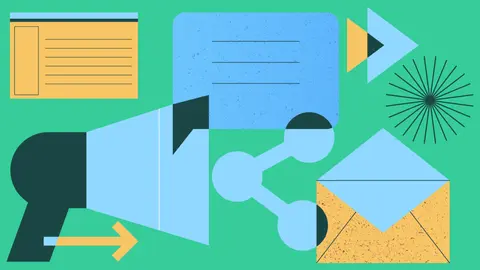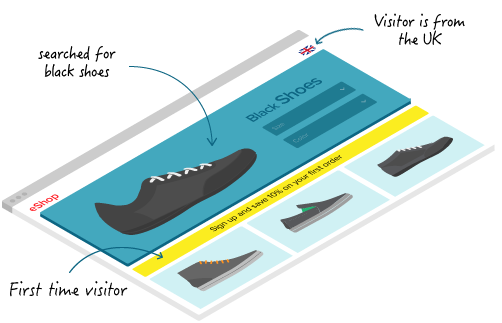Explore Solution Hub - our brand new library of pre-built solutions and interactive tours
Learn More →Step one in website personalization

I first had the opportunity to work with website personalization technology back in the late 1990s when personalization was still a novel concept. After nearly 20 years, it still surprises me how few websites offer any form of personalization.
As consumers, we experience hyper personalization on a daily basis when we visit amazon.com to go shopping and see recommendations based on our purchase history driven by Amazon’s sophisticated algorithms. We see the same thing when we visit social media sites, news sites, and other consumer oriented web properties.
So why is it that most B2B sites don’t do any kind of personalization? After all this time, it certainly isn’t a lack of available technology. Most contemporary web platforms that drive B2B sites offer more than enough features to deliver personalized experiences for their visitors.
What’s holding them back? I have a theory: I believe that most B2B companies don’t have a focused discipline of customer segmentation. Without a well-defined segmentation strategy, B2B marketers often get stuck with where to start. My recommendation? Start with the most simplistic kind of segmentation and run some experiments. Even if you haven’t built out a segmentation strategy, there are some pretty simplistic, universal segments that you can start with. Next, you need to come up with a basic messaging strategy that is differentiated for each segment.
Here are a few examples:
- Customers versus non-customers. You will never be able to identify 100% of your existing customers, so it is best to use the strategy to communicate messages when you can positively identify a customer. For example, you can promote an article about a user conference, support hotline, or other existing customer resource at the top level of your site.
- First-time versus repeat visitors. This is an easy one. If you’ve identified someone who’s come back to your site a second time, simply promote some content from a second-level page up to the homepage. It will allow you to reveal more content to customers as they continue to come back.
- Location-specific visitors. Are you promoting a local Chicago event to someone who is visiting from Korea? Do you have country specific websites? You can always offer to shift someone to that website with local content.
After a little bit of experimentation, you should quickly see the benefits of personalization. Conversion rates, visit times, page visits, and other metrics will improve if you present content that is personalized to the target segment.
Before you know it, you will be a personalization junkie. You will develop a deep segmentation of your target audience, tailor content to stage in the buying cycle, and generally reap the rewards that come along with better digital performance and happier customers.

Latest Posts
Blogs
Interviews, tips, guides, industry best practices, and news.
